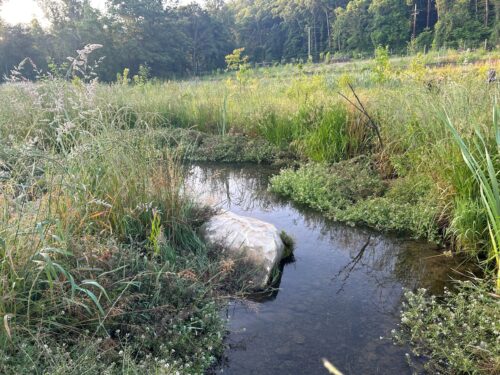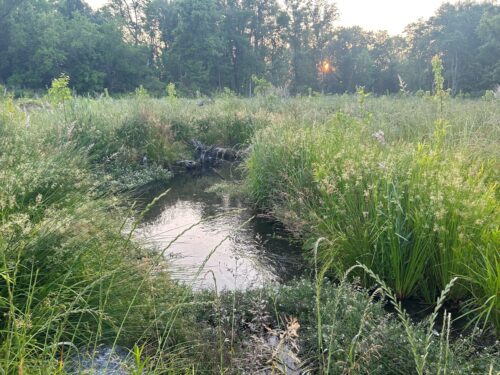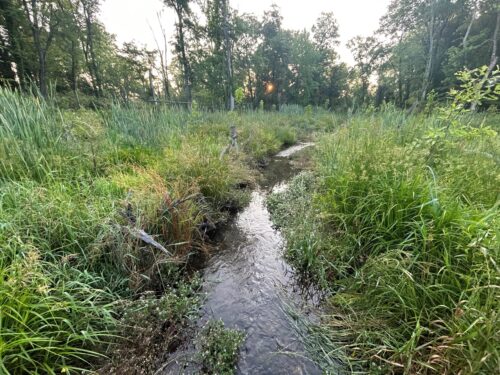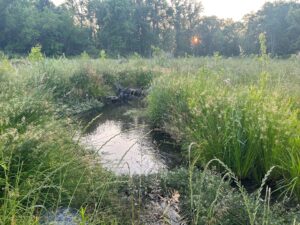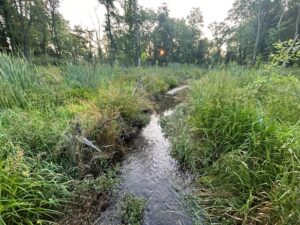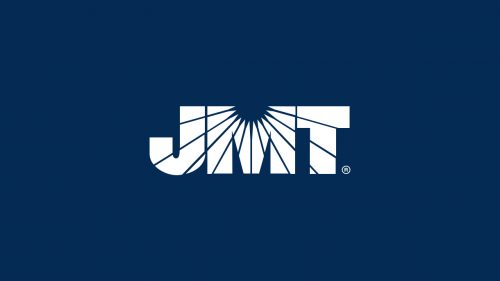Eccleston Permittee Responsible Mitigation Project
Eccleston Permittee Responsible Mitigation Project
JMT developed this turnkey, permittee-responsible mitigation (PRM) project along the Upper Jones Falls watershed within Baltimore County, MD. This project was initially developed as a mitigation bank; however, it was converted to a PRM project for the Maryland Transportation Authority to mitigate impacts from the agency’s I-95 Express Toll Lanes (ETL) Section 200 improvements. As such, JMT completed a re-evaluation of the NEPA Environmental Assessment for the ETL project including documentation and assessment for changes to project limits, limits of disturbance, and associated natural resource impacts.
This project restored more than 10,000 linear feet of brown trout stream and approximately 15 acres of wetlands of various Cowardin types, through preservation, enhancement, and restoration activities. JMT first identified the project site using a proprietary remote sensing and GIS tool developed by JMT and used our in-house property specialists to secure the property with a permanent easement from the landowner. JMT procured and oversaw construction of the project and is providing post-construction performance monitoring of the mitigation site.
Initial site investigations conducted as part of our functional assessment revealed several principal impairments to the reach. Straightening of the streams was evident and confirmed through a historical aerial investigation. The stream substrates were impaired due to channelization, disrupting the natural sediment transport processes. Existing as well as historical and now-breached impoundments disconnected the stream from its floodplain, leaving high banks of legacy sediment. The entire site was deforested as recently as 60 years ago according to historical aerial photos, and multiple buried tile locations were identified within the project limits as evidence of purposefully drained wetlands to increase tillable farmland. Additionally, emerald ash borer destroyed much of the green ash canopy on which the stream reach formerly depended upon for thermal regulation.
The principal restoration design goal for the mitigation site was to restore and stabilize the brown trout fishery on the Upper Jones Falls. Approximately 30 years of data have identified that brown trout are decreasing in numbers as the water temperature warms due to watershed development and climate change. The fact that this stream flows from Baltimore County and through the center of Baltimore City, and provides the future potential for the brown trout population to increase within the city limits, make it a desirable project for Baltimore County and Baltimore City.
This type of high-quality restoration, improving water quality and increasing the amount of potential brown trout habitat within the Jones Falls, is an example of how ecological uplift can be achieved in urban watersheds where streams flow through diverse and highly populated communities.
